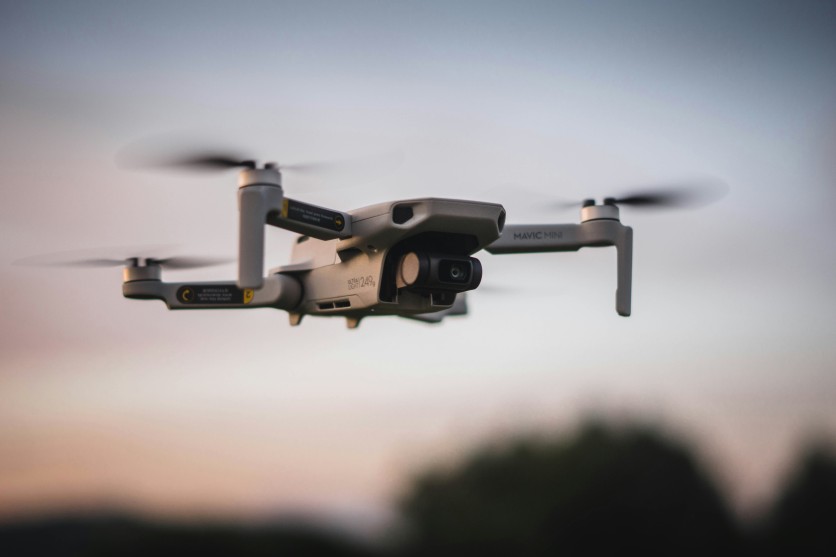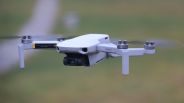DJI continues to dominate the drone market in 2025, offering some of the most advanced aerial filming tools for hobbyists, content creators, and professionals. Two of its most popular models—the DJI Air 3 and the DJI Mini 4 Pro—lead the conversation among pilots searching for the best DJI drone 2025. Both drones offer impressive capabilities, but they cater to slightly different needs, making a direct comparison essential.
Choosing between these models often comes down to a balance of portability, camera power, flight performance, and cost. That's why this DJI Air 3 vs Mini 4 Pro comparison breaks down the strengths of each drone and evaluates which one delivers better value depending on your flying goals. Whether you prioritize long-range filmmaking, lightweight travel, or maximum camera flexibility, understanding their differences will help you make a smarter investment in 2025.
Comparing DJI Air 3 vs Mini 4 Pro: Specifications and Features Breakdown
To understand which drone might be worth your money, it's important to examine the core features and technical differences that set these models apart. This section provides a clear DJI Air 3 vs Mini 4 Pro breakdown across size, weight, battery life, camera performance, and flight capabilities.
Mini 4 Pro:
- Size and Weight: The Mini 4 Pro weighs under 249 grams, placing it in the ultra-lightweight category where pilots face fewer flying restrictions. Its compact, foldable design easily fits into a small bag or even a jacket pocket, making it one of the most travel-friendly drones available.
- Battery Life: The Mini 4 Pro delivers around 34 minutes of flight time, with the option for up to 45 minutes when using the Intelligent Flight Battery Plus (in regions where it's approved). For such a small drone, this level of efficiency is highly impressive.
- Camera Performance: Equipped with a 1/1.3-inch CMOS sensor, the Mini 4 Pro can shoot 4K 60fps HDR video and offers excellent stabilization. It also supports true vertical video, making it a top choice for vloggers and social media creators.
While its camera performs very well for its size, its low-light performance and dynamic range naturally fall behind larger drones. - Flight Performance and Stability: The Mini 4 Pro is agile, quiet, and beginner-friendly. It excels in tight locations, indoor use, and travel shooting. Though it has omnidirectional obstacle sensing, it cannot match the wind resistance or raw power of heavier drones.
Air 3:
- Size and Weight: At roughly 720 grams, the Air 3 is significantly larger and heavier than the Mini 4 Pro. This added weight allows for stronger motors, improved flight stability, and better performance in windy conditions.
- Battery Life: The Air 3 lasts up to 46 minutes per flight, providing more airtime for professional filming, mapping work, or long-distance missions. This is one of the strongest battery performances in DJI's mid-range lineup.
- Camera Performance: The Air 3 features a dual-camera system with a 24mm wide-angle lens and a 3x telephoto lens. This setup enables more cinematic shots, better subject tracking, and improved depth compression. With 4K at 100 fps, enhanced night mode, and superior overall image quality, the Air 3 clearly targets filmmakers and professional users who need flexibility and high dynamic range.
- Flight Performance and Stability: With more powerful motors, more extended range, and advanced omnidirectional sensing, the Air 3 offers top-tier performance. It handles strong winds easily and is built for fast, precise maneuvers and complex flight paths.
Evaluating User Experience and Practical Uses in the DJI Drone Comparison
User experience plays a significant role in determining which drone fits your needs. In this section of the drone comparison, we look beyond specs to real-world practicality.
Ease of Use and Controls
- The Mini 4 Pro is incredibly intuitive, making it ideal for beginners and casual users. Its lighter weight and safety features create a smoother learning curve.
- The Air 3, while still beginner-friendly, is aimed at experienced pilots who need greater precision and advanced flight modes.
Obstacle Avoidance, Safety, and Target Users
Both drones come equipped with omnidirectional obstacle avoidance, but they differ in how they handle safety in real flight conditions. The Mini 4 Pro performs exceptionally well in tight spaces, making it ideal for indoor flights, travel videos, and slower, controlled movements. The Air 3, on the other hand, uses more advanced algorithms and stronger processing power, allowing it to navigate high-speed environments and more complex obstacle setups with greater precision.
When it comes to target users, the Mini 4 Pro is best suited for travelers, social media creators, hobby pilots, and anyone seeking an ultralight drone that delivers impressive performance. Its portability and ease of use make it a go-to option for everyday flying. The Air 3 is aimed at professional filmmakers, commercial drone operators, landscape shooters, and real estate photographers who need extended range, dual-camera versatility, and superior stability. Depending on your goals, the flight experience differs significantly—but both drones provide smooth, reliable performance tailored to their intended users.
Price and Value: Which Drone Offers More for Your Investment?
Pricing plays a huge role in deciding between these two models.
Mini 4 Pro Pricing
The Mini 4 Pro is the more affordable option, typically priced lower and offering budget-friendly Fly More Combo packages. For many users, it provides the best value because of its balance between cost, portability, and camera quality.
Air 3 Pricing
The Air 3 is more expensive, but with good reason. Its dual cameras, longer battery life, stronger motors, and enhanced intelligent features make it a comprehensive filmmaking tool. For professionals, the higher price translates into higher performance and flexibility.
Which Offers Better Value?
- If you want the best performance per dollar, the Air 3 wins.
- If you want the best lightweight drone for the money, the Mini 4 Pro is unbeatable.
Your investment depends on your flying goals—cinema-level footage or compact convenience.
Conclusion
Choosing between the DJI Air 3 vs Mini 4 Pro comes down to identifying your priorities as a pilot. Both drones offer exceptional value in 2025, but they serve different audiences. If you want powerful filming capabilities, long flight times, and a dual-camera system, the Air 3 is the stronger contender for the best DJI drone 2025. If you want portability, flexibility, and lower cost, the Mini 4 Pro is one of the best lightweight drones ever made. Regardless of your choice, both models showcase DJI's commitment to innovation and lead the field in drone comparison and performance.
Frequently Asked Questions
1. What are the main differences between DJI Air 3 and Mini 4 Pro?
The Air 3 has dual cameras, longer battery life, stronger flight performance, and better low-light capabilities. The Mini 4 Pro is much lighter and more portable.
2. Which drone is more portable?
The Mini 4 Pro, weighing under 249g, is designed for maximum portability and fewer flying restrictions.
3. How do battery lives compare between the two models?
The Mini 4 Pro averages 34–45 minutes, while the Air 3 reaches around 46 minutes.
4. Which drone has better camera performance?
The Air 3, thanks to its dual-camera system and superior image quality.
ⓒ 2025 TECHTIMES.com All rights reserved. Do not reproduce without permission.





